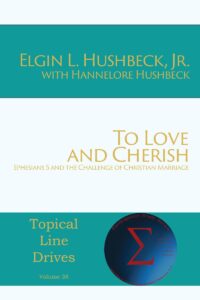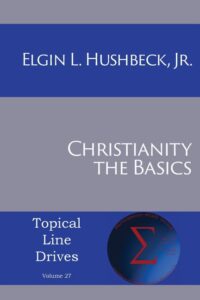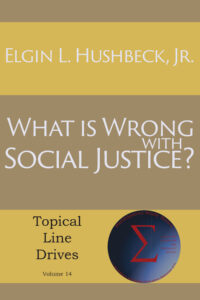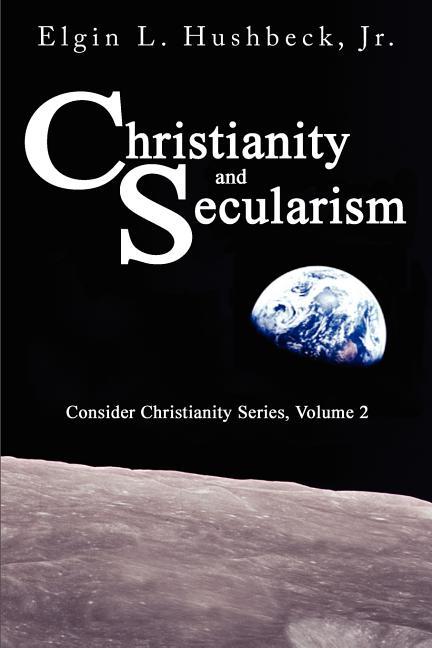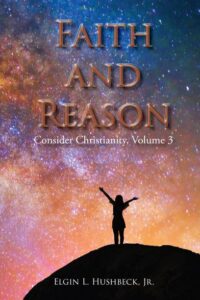The Epistles of John: Living in Truth and Love. 1 John 1a
Saturday, November 19th, 2011 by Elgin HushbeckWeek Eleven: Nov 20, 2011
This week we finish 2 John, and then started 1 John. I finished 2 John in previous post.
Study
1 John
Outline
While there is very large agreement when it comes to the outline of 2nd and 3rd John, the reverse is true when it comes to 1st John as there is very little agreement. As Marshall described the problem “It is… extremely difficult to find a pattern in the author’s thinking, and many different suggestions have been offered.”(p 22) As I reviewed the many suggested outlines none stuck me being correct as they seemed to be imposed upon instead of derived from the letter. So I looked at the text of 1 John and, right and wrong, came up with my own. You will need to decide if I have taken a step in the right direction, or just added to the confusion.
My approach was to look for distinctive features in the text that would define the structure, and I noticed two. While there is wide disagreement over the outline there is a general agreement that the first 4 verses of chapter one serves as a prologue to the rest of the letter, and I agree with this assessment. There is also general agreement that the letter has two main sections with the division occurring somewhere around the end of chapter 2 or the beginning of chapter 3. Commentators differ as to exactly where.
As such, the body of the letter begins in verse 5 with “This is the message that we have heard from him and declare to you: God is light, and in him there is no darkness—none at all!” I noticed that a very similar phrase occurs in 3:11, “This is the message that you have heard from the beginning: We should love one another.” These are the only two places where such a phrase occurs in 1 John and so I took them as marking off the two main portions of the letter. Verse 5:13 begins “I have written these things to you who believe…” While similar phrases do occur elsewhere, most notably in chapter 2, here they seem to have the tone of summation, and thus begin the final portion of the letter. So based on this we have 4 main parts, a prologue, two major sections and a conclusion.
The second feature I noticed is, as I noted in 2 and 3 John, John seems to use phrases such as “Dear Friend” (3 John 2, 5 & 11) and “Dear Lady” (2 John 5) to mark changes in thought, and the same appears to be true here as the transition at 2:1 is marked by “My little Children…” Looking through the letter, this and similar phrases occur periodically “My little Children…” (2:1), “Dear Friends…” (2:7 & 18), “Little Children…” (2:18, 2:28 & 3:7), etc., so I took these as marking transition. Using this as my framework I started my detailed analysis of the letter to see if this would work out. I am currently up to Chapter 3 and for the most part it is working very well.
The major diversion from this pattern has been in the middle of Chapter 2. While verse 12 does begin a section with “I am writing to you, little children…” it is the beginning of an almost poetic section of two groups of three phrases, were each phrase beginning with either “little children”, “fathers” or “young people” and clearly not all of them are meant to be transitions, rather the entire passage is a unit.
The other major break with this pattern occurs in verse 20, where John switches from talking about those who left in verse 19, to his readers with “You have an anointing from the Holy One and know all things.” This also seems to beginning a new section. Internally, most of these subsections consist of two part, and opening statement which often serves as a premise, and then a expansion or discussion.
At this point I have only worked through the beginning of chapter 3 and here is what I have so far. I will update this when I have finished my notes.
I. Prologue – Our Testimony: the Word of Life (1:1-4)
II. Part I – Light and Darkness (1:5 -310)
a. The Message – Living in the Light (1:5-1:10)
i. God Is Light – Establishing Common Ground (1:5)
ii. Three Proposition Refuted (1:6-10)
b. Expansion: Keep His Commandments (2:1-6)
i. Jesus the Messiah is our advocate (2:1-2)
ii. To know him is to obey him (2:3-6)
1 Statement (2:3)
a Claim (2:4)
b Counter-Claim (2:5)
2 Restatement (2:6)
c. Expansion: Love One Another (2:7-11)
i. The commandment to Love (2:7-8)
ii. To be in the light is to love (2:9-11)
1 Claim (2:9)
a Counter-Claim (2:10)
2 Restatement of Claim(2:11)
d. Our Position (2:12-17)
i. Our position in Christ (2:12-14)
ii. Warning: Do not love the world (2:15-17)
e. Their Position (2:18-27)
i. Antichrists a sign of the time (2:18)
ii. They Left us (2:19-20)
f. Why John Writes (2:21-27)
i. Premise: You Know all things (2:20-1)
1 You know lies are not in the truth
ii. Those who deny are the liars (2:22-23)
1 Those who confess have the son and the father.
iii. You remain in him (2:24-25)
1 You have the promise of eternal life
iv. Summary (2:26-27)
g. Expansion: Abide in the Father (2:28-3:1)
i. To abide is to be Prepared (2:28)
ii. The righteous are God’s Children (2:29-30)
h. Expansion: We are God’s Children Live accordingly (3:2-3:6)
i. Premise: We will be like him (3:2)
ii. Live accordingly (3:29-30)
i. Don’t be Deceived (3:7 – 3:10)
i. Premise: Don’t be Deceived (3:7a)
ii. Distinguishing between Righteous and Unrighteous (3:7b-3:10)
III. Part II – Love One Another (3:11-5:14)
a. The Message – Love One Another(3:11-17)
b. True Love Acts (3:18-20)
c. Love answer prayer (3:21-24)
d. Test what People Say (4:1-3)
e. We overcome the World (4:4-6)
f. Love comes from God (4:7-10)
g. Love leads to perfection (4:11-5:12)
IV. Epilogue – These things have I written unto you (5:13-21)
a. Conclusion (5:13-20)
b. 4:21 – Final warning (5:20)
Notes
I. Prologue – Our Testimony: the Word of Life (1:1-4)
The first four verses of this letter are one sentence in the Greek text and most consider this sentence to be the most complicated in the writings of John, with phrases such as “bordering on incoherence,” “grammatical impossibilities” and “unclear.” (Harris) The train of thought is interrupted 3 times and the main verb does not occur until the end of verse 3. However the thoughts here are not random but appear to have the following structure.
| 1a | (imperfect) | What was from the beginning |
| 1b | (perfect) | What we have heard |
| 1c | (perfect) | What we have seen with our own eyes |
| 1d | (aorist) | What we have observed and our hands have touched |
| 1e | Concerning the word of Life | |
| 2a | (aorist) | And the life was revealed |
| 2b | (perfect) | And we saw |
| 2c | (present) | And we testified and proclaim to you |
| 2d | The life eternal | |
| 2e | Which was with the father | |
| 2f | (aorist) | And was revealed to us |
| 3a | (perfect) | What we have seen and have heard (summary of 1&2) |
| 3b | (present – main) | We proclaim to also you |
| 3c | (present) | So you also many have fellowship with us |
| 3d | And this fellowship of ours is with the father | |
| 3e | And with his son Jesus Christ | |
| 4a | (present) | And these things we write |
| 4b | (present, perfect) | So that our joy may be full. |
1a – 2d are in the form of a chiasmus, centered on 1e, “Concerning the word of Life,” with 2e and f begin a further description of “The life eternal.” 3a quickly summarizes the chiasmus before getting to the main verb “We proclaim” in 3b. The remainder of the passage (3c-4b) then explains the reasons for the proclamation.
The reason for all this complexity is that John is doing many things. He is making an allusion to the Gospel of John, which also opens with a chiasmus. He is stressing the eyewitness nature of his testimony and that it results in both eternal life and fellowship with the father.
1:1 – What existed from the beginning, what we have heard, what we have seen with our eyes, what we observed and touched with our own hands—this is the[1] Word of life!
– There is a pretty clear allusion to John 1:1 here: In the beginning was the Word…
– This is the first of 4 “what” phrases, and instantly raises the question of just what is being referred to here? As is often the case there are several possibilities that have been suggested.
1 Jesus as the Word (λόγος) as in John 1:1. There does seem to be a clear allusion to the opening of John’s gospel and the word (λόγου) is mention here at the end of the verse, “The word of life (τοῦ λόγου τῆς ζωῆς). There is, however, a problem. The passage says “What” (neuter), not “The one” (masculine). It is not impossible for a person to be referred to using a neuter. Paul does this in 1 Cor 15:10 saying about himself that, “By the grace of God I am WHAT I am.” But it is unusual.
2 Life is another possibility, as this is also mentioned at the end of the verse. It is also supported by 1:2 which begins “This life…” However this option has the same problem as understanding this as Jesus for the Greek word for life (ζωῆς) is feminine.
3 I believe the best way to understand this is to see Word of Life as embodying both the incarnation and message of God. Thus the reason John uses “What” (neuter) is because the reference is not just personal but is inclusive of the message of salvation that Jesus proclaimed. John is stressing the inseparability between the message of Christ and the person of Jesus, which as we will see early in the letter is very important to his overall message.
Next week we will continue in 1 John 1
If you have question or comments about the class, feel free to send me an email at elgin@hushbeck.com and be sure to put “Epistles of John” in the header.
See here for references and more background on the class.
Scripture taken from the Holy Bible: International Standard Version®. Copyright © 1996-2008 by The ISV Foundation. ALL RIGHTS RESERVED INTERNATIONALLY. Used by permission. www.isv.org
Note: Some places I have modify the text from the ISV version. Passages that I have modified have been noted with and * by the verse number and the ISV text is included in a footnote.
Footnotes:
1 v1:1 Lit. about the
